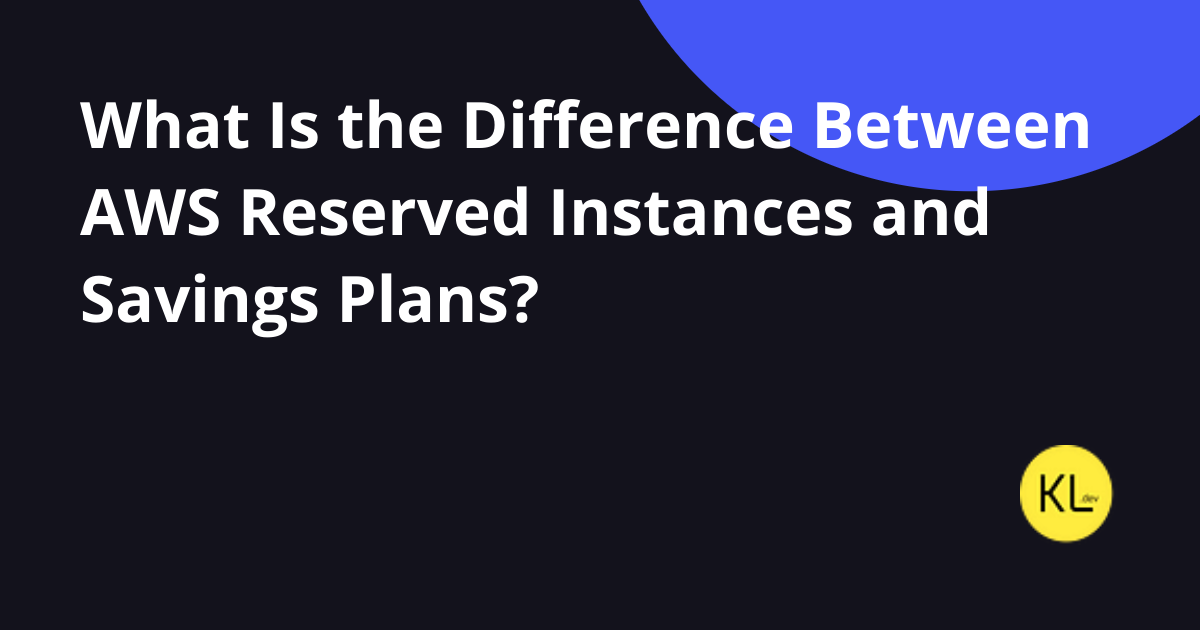
How AWS Reserved Instances Saved My Costs
Cloud computing offers flexibility and scalability, but it can come at a cost. When I first started using Amazon Web Services (AWS), I relied heavily on On-Demand Instances. They were convenient and perfect for unpredictable workloads. However, as my usage patterns became more predictable, I realized my monthly AWS bill was higher than it needed to be. That's when I discovered AWS Reserved Instances (RIs), and they transformed my cloud cost management.
In this blog post, I’ll share my experience with AWS Reserved Instances, how they helped reduce my cloud costs, and some practical tips for anyone considering them. You can also check the “Saving Plans” recommended by AWS.
Reserved Instances are a billing discount applied to Amazon EC2 instances when you commit to a specific instance type, region, and operating system for a one- or three-year term. Unlike On-Demand Instances, which charge by the hour or second without any commitment, RIs provide significant cost savings in exchange for this commitment.
AWS offers three main RI payment options:
- No Upfront: No initial payment, but higher hourly rates than the other options.
- Partial Upfront: A portion of the cost is paid upfront, with lower hourly rates.
- All Upfront: The entire cost is paid upfront, offering the most significant discount.
How Reserved Instances Reduced My Costs
1. Analyzing My Usage Patterns
Before purchasing RIs, I needed a clear understanding of my EC2 usage. Using AWS Cost Explorer, I analyzed my resource utilization over six months. The data revealed that several instances were running 24/7 with consistent workloads—perfect candidates for Reserved Instances.
2. Strategically Selecting RIs

I identified instances that were unlikely to change in size, type, or region. For example:
- My production environment required t2.micro instances in the us-east-1 region.
- The predictable workload made a one-year All Upfront RI a logical choice for maximum savings.
AWS provides a Reserved Instance Advisor, which recommends RIs based on historical usage. This tool was instrumental in my decision-making process.
3. Calculating Savings
By switching from On-Demand to Reserved Instances, I saved:
- I committed to it for one year all upfront ($59.00) for t2.micro.
- Approximately 50% on less predictable workloads using Convertible RIs, which allowed some flexibility in instance type and size.
Lessons Learned
1. Plan for the Long Term
While RIs offer significant savings, they require a long-term commitment. Be sure to evaluate whether your workload will remain consistent over the chosen term.
2. Leverage Savings Plans
AWS now offers Savings Plans, which provide similar discounts with more flexibility. If you’re unsure about committing to a specific instance type, these might be a better fit.
3. Monitor Utilization
Reserved Instances don’t automatically apply to unused resources. Use AWS Cost Management Tools to ensure your reserved capacity is being utilized effectively.
4. Combine with Spot Instances
For workloads with variable demands, combining Reserved Instances with Spot Instances can further optimize costs. I used this approach for my development environment.
Final Thoughts
AWS Reserved Instances proved to be a game-changer for my cloud budget. By analyzing usage, committing to predictable workloads, and continuously monitoring utilization, I was able to achieve substantial savings while maintaining the performance and reliability of my applications.
If you’re looking to reduce your cloud costs, start by evaluating your workloads and exploring RIs or Savings Plans. The upfront effort in planning can lead to significant financial benefits over time.


